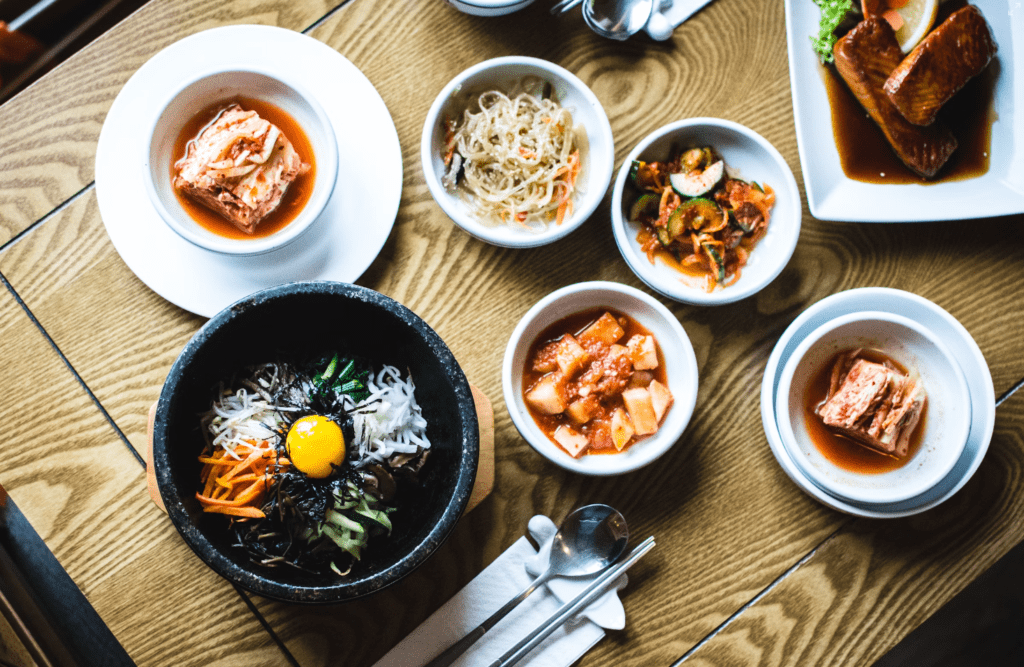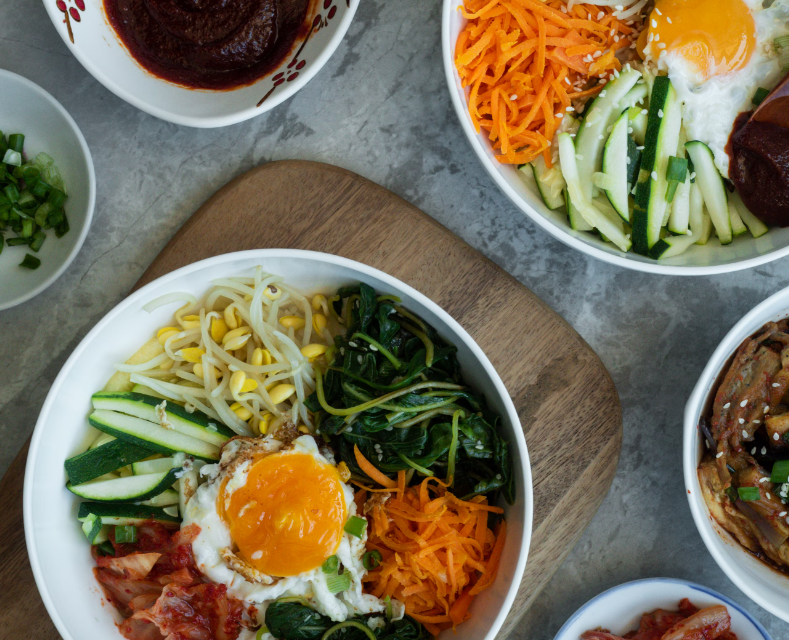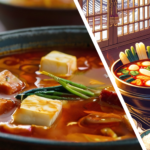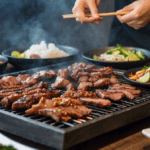📅 게시일: 2024년 03월 11일 | 🔄 수정일: 2024년 03월 12일
Korean Cuisine: A Journey Through Time and Taste
Korean cuisine, with its rich history and vibrant flavors, offers a culinary adventure that spans centuries. It reflects the geographical and historical changes of the Korean peninsula, presenting a food culture rich in tradition, innovation, and community. From the royal courts of the Joseon Dynasty to the bustling streets of modern Seoul, Korean food is a testament to the resilience and creativity of its people.
Introduction to Korean Cuisine
The essence of Korean cuisine lies in its variety and balance. Combining elements from the mountains, sea, and fields, Korean dishes are not only about sustenance but also about bringing harmony and health to the body and soul. This cuisine is characterized by its bold flavors, with an emphasis on fermentation, seasoning, and a side-dish culture that turns every meal into a feast.
Staple Ingredients in Korean Cooking
Central to Korean cuisine are rice and grains, which provide the foundation for meals. Barley, millet, and beans accompany rice in many traditional dishes, offering texture and nutritional balance. Vegetables play a starring role, from leafy greens to roots like ginseng, contributing vitamins and minerals essential for health.
Meats, particularly beef, pork, and chicken, are used sparingly, often marinated and cooked to tender perfection. Seafood is abundant, reflecting Korea’s extensive coastline, with dishes ranging from raw fish (hoe) to fermented specialties like jeotgal. Seasonings like soy sauce, sesame oil, garlic, and ginger add depth, while the fiery gochujang and tangy doenjang bring heat and umami to the palate.
Iconic Korean Dishes
Kimchi stands as the symbol of Korean cuisine, a fermented dish with countless variations. Each region has its own specialty, from the spicy and garlicky baechu kimchi of the north to the fresh and crisp dongchimi of the south.
Bibimbap combines rice, mixed vegetables, beef, and a fried egg, crowned with gochujang. This dish not only pleases the eye with its array of colors but also offers a balanced meal that satisfies the palate with its diverse textures and flavors.

Bulgogi, meaning “fire meat,” is a beloved dish featuring thinly sliced marinated beef grilled on a barbecue or stove-top griddle. The meat’s sweet and savory flavors, achieved with a marinade of soy sauce, sugar, sesame oil, and garlic, have made it a favorite both within Korea and internationally.
Korean Street Food Delights
Street food is an integral part of Korean food culture, offering a glimpse into the country’s rich culinary diversity. Tteokbokki, a spicy and sweet dish made from rice cakes and fish cakes in a gochujang sauce, is a popular snack that embodies the heart and soul of Korean street food.

Hotteok is another street food marvel, a sweet pancake filled with a mixture of brown sugar, honey, chopped nuts, and cinnamon. Fried to a golden brown, its crispy exterior and molten sweet interior make it an irresistible treat, especially during the cold winter months.
Traditional Korean Dining Etiquette
Dining in Korea is more than just eating; it’s a communal activity that fosters connection and respect. The oldest or most senior person at the table usually starts the meal, a practice that honors age and hierarchy. Sharing dishes is common, reflecting the communal nature of Korean society. Understanding and adhering to these dining customs can greatly enhance the experience of Korean cuisine.
Korean Cuisine and Health Benefits
The health benefits of Korean cuisine are well-documented, largely due to its emphasis on vegetables, fermented foods, and cooking techniques that preserve the integrity of ingredients. Fermentation, a hallmark of Korean food, not only extends the shelf life of ingredients but also enhances their nutritional profile, contributing to gut health and overall wellness.
Korean Food Beyond Borders
The global popularity of Korean cuisine is a testament to its universal appeal. Korean restaurants and food products can be found worldwide, from major cities to small towns, introducing global audiences to the flavors and traditions of Korean food. This international presence has not only introduced Korean culture to the world but has also influenced global food trends, with dishes like kimchi and bibimbap becoming household names.
DIY Korean Cooking at Home
Embarking on a Korean cooking adventure at home can be both exciting and rewarding. Starting with simple dishes like kimchi jjigae (kimchi stew) or japchae (stir-fried glass noodles) can demystify Korean cooking and bring the flavors of Korea into your kitchen. With a few essential ingredients and some basic techniques, anyone can enjoy the delights of Korean cuisine at home.
Conclusion: The Universal Appeal of Korean Cuisine
Korean cuisine, with its emphasis on balance, health, and community, has a universal appeal that transcends cultural and geographical boundaries. Its ability to adapt and evolve while staying true to its roots is a testament to the richness of Korean culture. As more people around the world discover and embrace Korean food, its journey from the mountains, fields, and seas of Korea to the global stage continues, inviting everyone to share in its delicious heritage.










